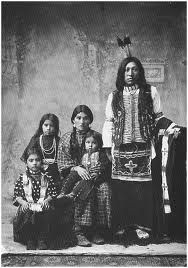bannock tribe
bannock 
The Bannock Indian tribe or Banate traditionally lived in the northern Great Basin that is to say, the south-eastern Oregon and southern Idaho. They speak the language of northern Paiute and are related to the tribe of the Northern Paiutes. Some anthropologists believe they are among the most northern Paiutes bands. The Bannocks have developed a culture of horse strong relationship with the Northern Shoshone.
Appalled by their living conditions on the Fort Hall reservation in southern Idaho, they indulged in the Bannock War in 1878. Returned to their reserves after the war, they gradually mixed with the Northern Shoshone who shared it with them.
They still live on the reservation of 2,201 square kilometers which bears the inevitable casino became the hallmark of an Indian reserve in early twenty-first century.
Bannock
La tribu amérindienne Bannock ou Banate vivait traditionnellement dans la partie nord du Grand Bassin c'est-à-dire le sud-est de l'Oregon et le sud de l'Idaho. Ils parlent la langue païute du nord et sont apparentés à la tribu des Païutes du Nord. Certains ethnologues considèrent qu'ils font partie des bandes païutes les plus nordiques. Les Bannocks ont développé une culture du cheval en relation forte avec les Shoshones du Nord.
Révoltés par leur condition de vie sur la réserve de Fort Hall au sud de l'Idaho, ils se livrèrent à la guerre Bannock en 1878. Retournés sur leur réserve après la guerre, ils se sont peu à peu mêlés aux Shoshones du Nord qui la partageaient avec eux.
Ils vivent encore aujourd'hui sur cette réserve de 2 201 km² qui porte l'inévitable casino devenu la marque caractéristique d'une réserve indienne du début du XXIe siècle.
A découvrir aussi
- the seminoles les seminoles
- LES APACHES (EN FRANCAIS)
- The Hopi Indians of Arizona Les indiens Hopis de l'Arizona
Inscrivez-vous au site
Soyez prévenu par email des prochaines mises à jour
Rejoignez les 76 autres membres
